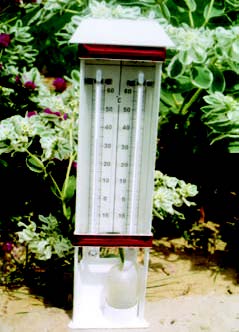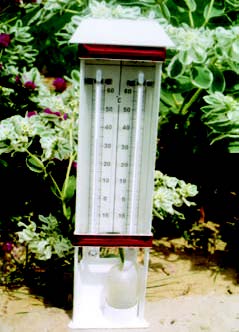Introducing greenhouse equipment - humidificometer (nemeometer or cycrometer)
In this article, we will try to introduce the equipment used and useful in the greenhouse in 12 parts and review the important points in their preparation and use. In this section, we will introduce humidificometer (nemeometer or cycrymeter).
This device is used to measure moisture with the amount of water vapor in the air. Humidificators exist in many forms. In the figure, a sample of it is shown. It's also called a cycrat. This device has two thermometers that are located side by side.

Sometimes, a micrometer is called a wet and dry thermometer because at the end of the wet thermometer there is a container full of distilled water that is connected to the tank by a special cotton thin cloth. Thermometers should be placed in the open air and away from direct sunlight.
The second degree difference of the thermometer is an inverse function of relative humidity of the air. If the air is saturated with moisture, the water vapor around the thermometer cannot evaporate and both thermometers show the same temperature and their temperature difference is zero and the relative humidity of the air is 100%. On the contrary, the dry air has lower relative humidity, in this case, a lot of water is steamed from the thermometer and the temperature difference of the two thermometers will be greater. Therefore, when the relative humidity of the air is high, evaporation is slow and when the relative humidity of the air is low, evaporation is done quickly (because the evaporation of the process is heat-affected) after reading the minimum and maximum temperatures and calculating the difference between them using a special table of cycrometres can be found the percentage of humidity in the ambient air.
There is another type of humidificometer, known as hand humidify meter. The hand of each number on the screen is equal to the relative humidity of the environment.

